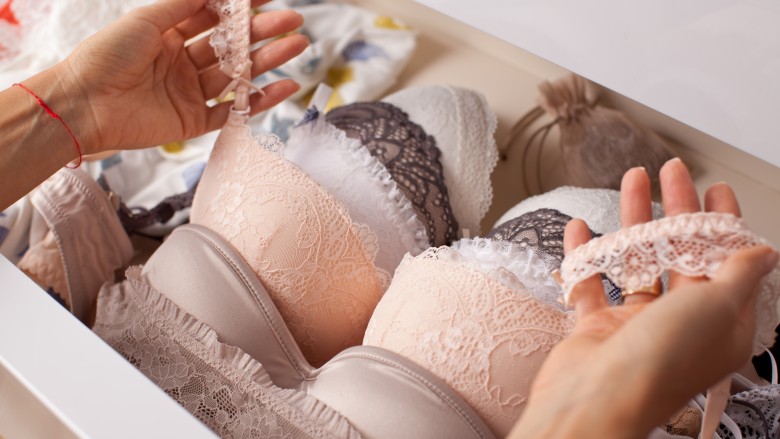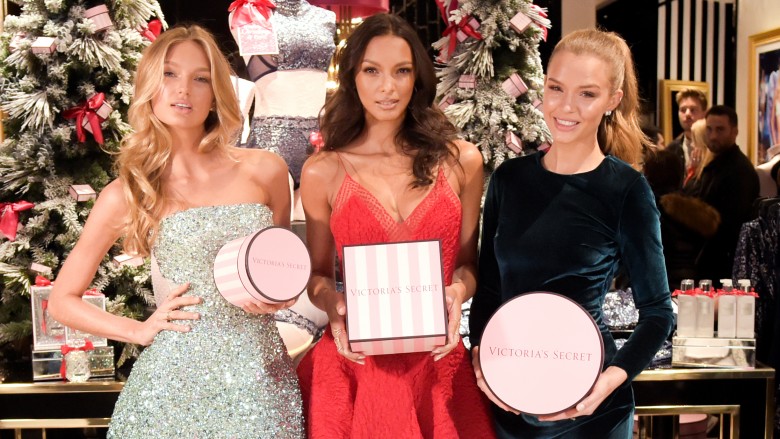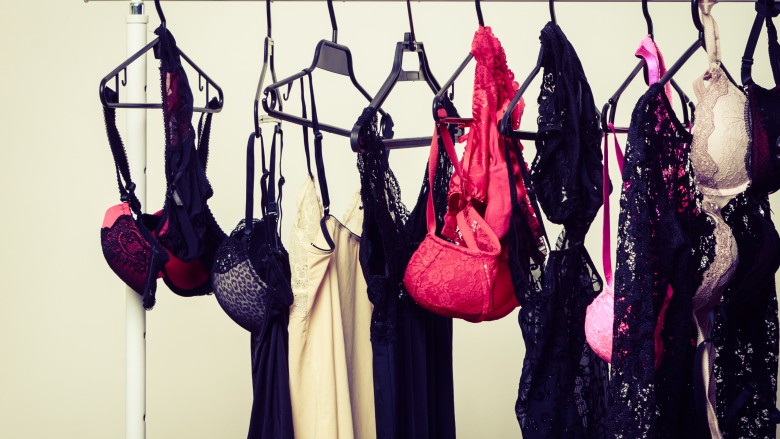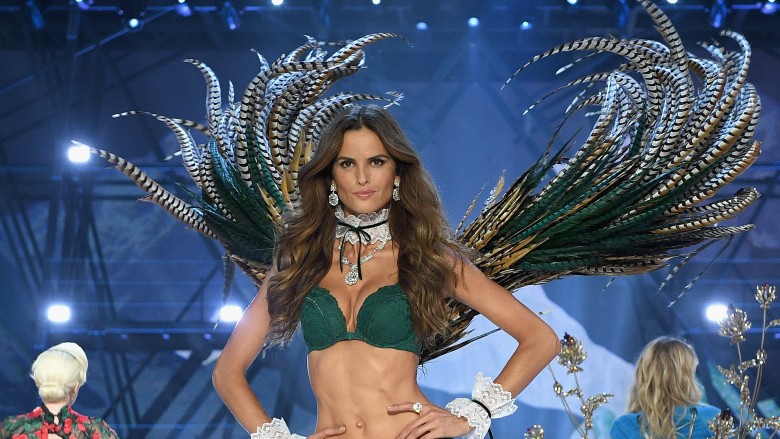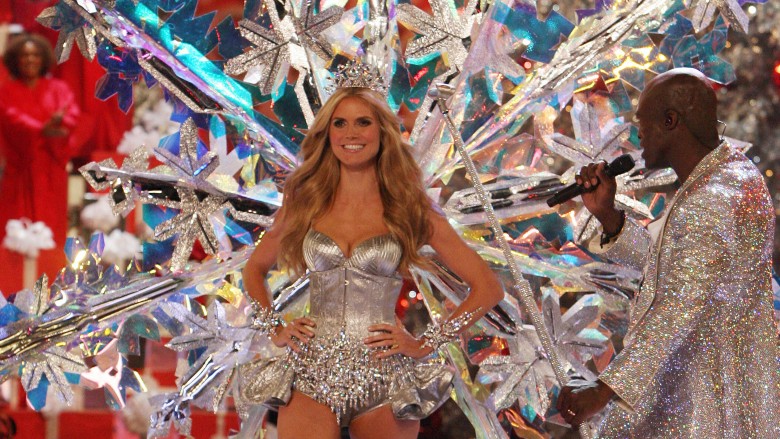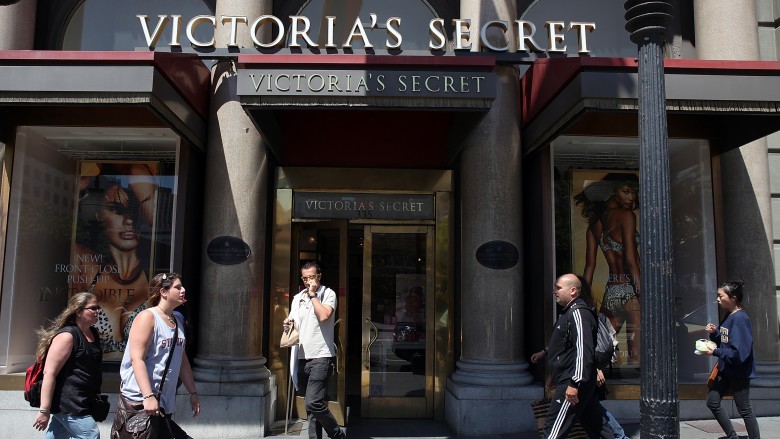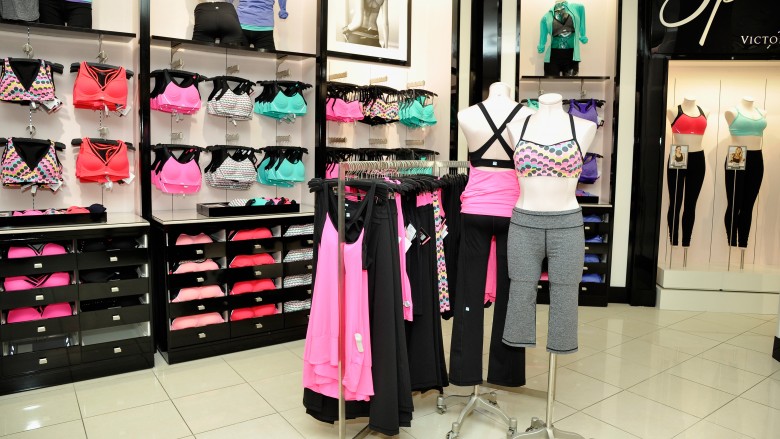The Untold Truth Of Victoria's Secret
We may receive a commission on purchases made from links.
It may seem hard to believe, but not too long ago women's unmentionables were, well, unmentioned. Unlike today, there were limited cuts to bras and panties, and often what was found in the department stores was girlish with frills, floral print, or plain. Underwear was utilitarian — it covered all the bits that needed to be covered without much fuss.
Victoria's Secret helped change all that.
Since it was founded in the late 1970s, Victoria's Secret has transformed the way women wear their underwear and how society talks about it. But behind the sparse unmentionables is a hidden side to the company many do not know.
Vicky was born out of an awkward moment
We probably wouldn't have Victoria's Secret if not for one dedicated husband. According to a 2012 article in the Daily Mail, Roy Raymond, a California-based entrepreneur with an MBA from Stanford University, came up with the idea because he felt extremely uncomfortable trying to buy lingerie for his wife at a department store.
"Our original idea was to have a store where men felt comfortable shopping for lingerie. It all began when Roy went shopping for me, and felt out of place in a lingerie store. Victoria's Secret tried to change that," Roy's former wife, Gaye Raymond, told the Daily Mail.
Roy was bothered by the dowdy, floral print nightgowns, the fluorescent lights, and the judgmental stares of the saleswomen. So instead of leaving with a sexy teddy, he walked away with an idea: a sensual store where men can buy lingerie for the women in their lives.
The experience was meant to be regal and sensual
With his business idea in mind, Roy began to flesh out the details of this innovative new enterprise. He settled on the name Victoria's Secret — the idea that even the respectable women of the Victorian era (1837-1901) had their secrets underneath. To ensure the subtle hint of sexuality wasn't missed, the store would look like a Victorian era boudoir — with dark wood, oriental rugs, and silk drapery.
"The Victoria's Secret we founded was an upscale, sophisticated lingerie store that I designed to look like a Victorian drawing room, complete with Oriental rugs and antique armoires displaying the wares," Gaye said. "I remember making the velvet curtains for the first changing rooms. We used a lot of silk and natural fibres in our lingerie, and it was very high quality."
Victoria's Secret looked more like a brothel
When the original location opened its doors in 1977, it was an automatic hit. But its decor left much to be desired.
According to Les Wexner, the eventual owner of Victoria's Secret: "It was a small store, and it was Victorian — not English Victorian, but brothel Victorian with red velvet sofas."
Despite the less than tasteful decor, Wexner saw potential in the burgeoning business. A very successful Ohio businessman, Wexner already owned The Limited and would later add Express, Lane Bryant, Bath & Body Works, and Limited Too to his retail empire.
"There wasn't erotic lingerie, but there was very sexy lingerie, and I hadn't seen anything like it in the U.S.," he said. "I saw ingredients in it. What if we mixed it up differently?"
The company almost went bankrupt
Wexner would have his chance to mix things up.
Roy Raymond met Wexner during the '70s, when Wexner was visiting some of his other retail locations on the west coast. During that time the two became friends, or at least friendly enough that when Victoria's Secret began to flounder in 1982, Roy called in Wexner to help. Though Vicky's was making more than $4 million in annual sales, the business was on the brink of bankruptcy. For $1 million, Wexner bought complete interest in the business, including several stores and a mail order catalog.
"My husband Roy had spoken to Les Wexner a few times about working together, but ultimately Roy felt he couldn't share decision-making, and was happier getting out completely," Gaye said.
Victoria's Secret was really meant for men
Part of Wexner's mix-up was refocusing the company's target audience. Under Roy's leadership, the store was geared toward men wanting to feel comfortable about buying women's lingerie. Wexner soon found out that by making men more comfortable, women were alienated.
"Most of the women that I knew wore underwear most of the time, and most of the women that I knew I thought would rather wear lingerie most of the time, but there were no lingerie stores," he said. "I thought if we could develop price points and products that have a broader base of customer, it could be something big."
Victoria is imaginary
Wexner's next move was to put a face to the Victoria name. According to the book Trading Up: Why Consumers Want New Luxury Goods — and How Companies Create Them, Wexner created a fictional founder backstory for the brand. Victoria was an English-French model who was sophisticated and sexy. She started selling sensual unmentionables on Sloane Street in London, an exclusive shopping area known for having high-end fashions.
"It was like the making of a movie or telling a story to children," Wexner said. "The story was so believable and engaging that our marketing people, merchandising people, store people, and store designers could get involved in it and tell it themselves."
The creator commited suicide
As the myth of Victoria grew, the original founder, Roy Raymond, began to shrink. He used the money from selling Vicky's to start a new children's store, but that too went bankrupt. Because Roy tangled his personal finances and business finances, the couple also lost two homes and a car.
"He went through a couple of business failures and I think he suffered depression," Gaye said. "He borrowed a lot of money from his mother. He was trying to start another company but things didn't go well, and he saw only one way out."
Shortly after getting divorced in 1993, Roy jumped off the Golden Gate Bridge.
"It's so sad, because he was young, creative, really a brilliant businessman, but he suffered setbacks and couldn't seem to bounce back from them. He felt he couldn't go on," she said. Roy left behind two children.
The store changed drastically over time
The same year Roy committed suicide, Victoria's Secret was becoming the number one lingerie retailer in America. Despite its monumental success, Roy and Gaye felt the brand had strayed from their original intentions.
"It's no longer high-end fashion focused on fit, quality, and fiber, but it's now more popular, with a lower price and aimed at a far younger crowd," said Gaye. "Roy and I used to have our regrets about how much it had changed from our original vision. Yet they've done a great job making it a commercial success."
Victoria has a few tricks up her sleeves
While Victoria's Secret might not have cavernous walls and Oriental rugs, some things haven't changed. It's still kind of for men. According to a 2014 Business Insider report, employees are trained to treat male customers with a little more special attention. But don't take it the wrong way, ladies. According to an anonymous employee, they do this to get men to buy more.
"The general feeling about men is that they would buy anything in order to get out of the store as quickly as possible," the worker told Business Insider. "That means they would spend more money."
She went on to say: "Women are more value-oriented, and so we were encouraged to show them deals. Men would buy a couple of $50 bras without questioning us because they felt awkward."
Losing ground in a changing market
Though Victoria's Secret has a stronghold on the women's lingerie market — 35 percent of the market in 2014 — the company has faced some economic challenges, which has forced the company to rethink its place in the market.
"Inside the good results of last year, I thought [Victoria's Secret's] results weren't to expectations," Wexner said at the company's annual meeting in 2016. "I know I'm a hard grader. As good as the performance was, I thought Victoria's Secret was stalling out."
To combat what he saw as stalling, Wexner cut jobs, discontinued their clothing lines, swimsuit line, and much of their online shoe retail. Instead, the company is shifting focus to lingerie, beauty, and its Pink line. As women are moving away from the push-up bra for more natural silhouettes, Victoria's Secret is trying to find new, creative ways for women to define their sexy.


